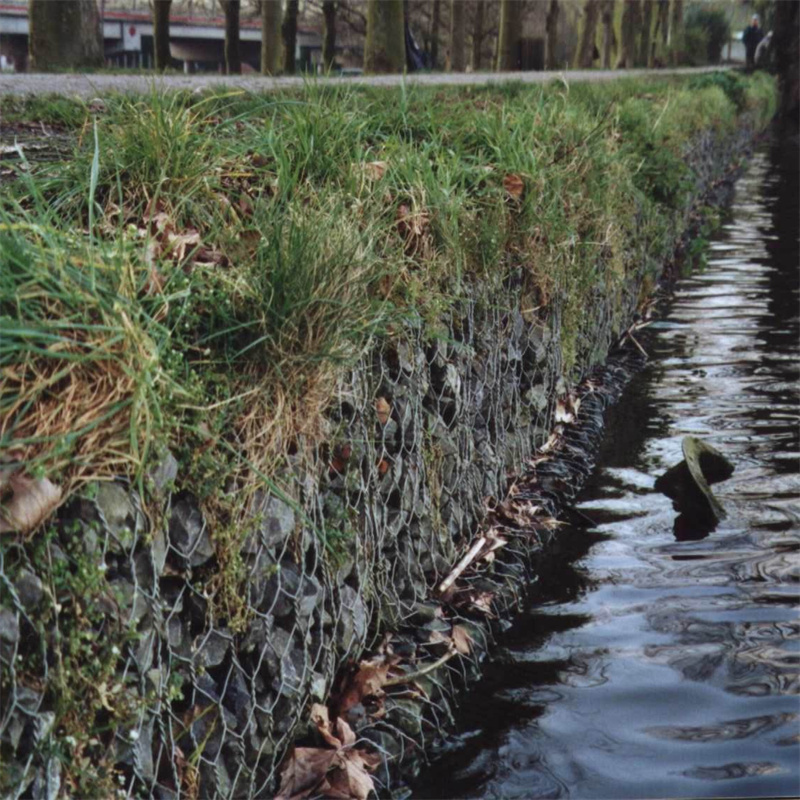Nov . 17, 2024 23:21 Back to list
gabion cages for retaining walls
Gabion Cages for Retaining Walls A Practical Solution
In the world of civil engineering and landscaping, retaining walls play a crucial role in managing soil erosion, supporting steep grades, and adding aesthetic value to outdoor spaces. Over the years, various materials have been utilized to construct these structures, but gabion cages have emerged as an increasingly popular option. This article explores the benefits, applications, and installation processes of gabion cages for retaining walls.
What are Gabion Cages?
Gabion cages are wire mesh containers filled with stones, rocks, or sometimes soil. The term gabion originates from the Italian word gabbione, meaning big cage, which aptly describes their structure. Typically, these cages are rectangular in shape and can vary significantly in size. They are designed to retain the fill material, allowing for a flexible, durable, and eco-friendly solution for numerous construction problems.
Advantages of Gabion Cages
1. Versatility Gabion cages are incredibly versatile and can be used in a variety of applications. In addition to serving as retaining walls, they can be used in riverbank stabilization, erosion control, noise barriers, and even decorative landscaping features.
2. Cost-Effective Compared to traditional retaining wall materials such as concrete or stone, gabion cages often provide a more economical solution. The materials needed for filling the cages can frequently be sourced locally, reducing transportation costs.
3. Drainage and Environmental Considerations Gabion cages allow water to flow through their structure, minimizing hydrostatic pressure build-up behind the wall. This drainage capability reduces the risk of failure due to water accumulation. Additionally, they can promote vegetation growth, which further enhances their environmental benefits.
4. Aesthetic Appeal With the option of using different types of stones or rocks, gabion walls can add a natural beauty to landscapes. The design can be customized to fit various aesthetic requirements, making them an attractive option for gardens, parks, and public spaces.
5. Durability and Longevity Made from Galfan or PVC-coated wire, gabion cages are designed to withstand harsh environmental conditions. They resist corrosion, allowing for a longer lifespan compared to traditional materials.
Applications
Gabion cages are used successfully in both residential and commercial projects
. In residential settings, they can create beautiful terraces and garden retaining walls, effectively preventing soil erosion and providing tiered gardening space. In commercial applications, they find uses in slope stabilization, roadways, and flood control systems.gabion cages for retaining walls

Highway projects often utilize gabion walls along embankments due to their ability to control soil erosion and enhance safety. Additionally, gabions can help manage stormwater runoff and protect infrastructure from the impact of heavy rain.
Installation Process
Installing gabion cages is a relatively straightforward process, making it accessible for DIY enthusiasts. Here’s a quick overview of the installation steps
1. Planning Begin with a thorough design plan that factors in the intended use of the wall, soil conditions, and drainage requirements.
2. Site Preparation Clear the installation site to ensure a stable foundation. This may involve excavation, grading, or creating a level surface.
3. Base Layer Lay a base of larger stones to provide stability for the gabions. This helps prevent settling over time.
4. Assembling Boxes Assemble the gabion cages according to the manufacturer's instructions and ensure they are securely fastened.
5. Filling the Gabions Fill the cages with the chosen rocks or stones, starting from the back and working towards the front. Ensure even distribution throughout the cage.
6. Securing the Top After filling, securely close the gabion cages to ensure the contents remain intact.
7. Finishing Touches You can add soil and plant vegetation around the structure to integrate the retaining wall harmoniously within the landscape.
Conclusion
Gabion cages for retaining walls offer a blend of functionality and aesthetic appeal. Their versatility, environmental benefits, and cost-effectiveness make them suitable for a wide range of applications. Whether in residential gardens or commercial projects, gabion walls present a practical solution to soil retention and erosion control, demonstrating that innovative designs can lead to sustainable and visually pleasing outcomes in landscape management.
-
HESCO Gabion Baskets for Coastal Erosion Prevention
NewsAug.22,2025
-
Longevity and Durability of River Rock Gabion Walls
NewsAug.22,2025
-
How to Integrate Gabion 3D Walls in Urban Planning
NewsAug.22,2025
-
Reno Mattress Gabion Applications in Civil Engineering
NewsAug.22,2025
-
How to Install Wire Mesh for Gabion Baskets Properly
NewsAug.22,2025
-
Best Materials for Filling a Chain Link Gabion
NewsAug.22,2025
-
Wire Mesh Thickness Impact on Gabion Wall Load Bearing
NewsAug.12,2025






